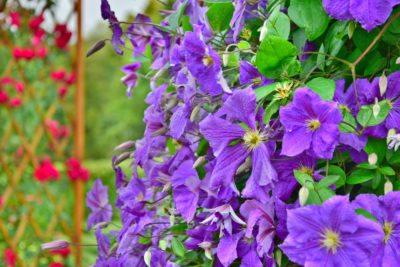
Vines are great. They can cover up a wall or an unsightly fence. With some creative trellising, they can become a wall or a fence. They can turn a mailbox or a lamppost into something beautiful. If you want them to come back in the spring, however, it’s important to make sure they’re winter hardy in your area. Keep reading to learn more about growing vines in zone 7, and some of the most common zone 7 climbing vines.
Viti in crescita nella zona 7
Winter temperatures in zone 7 can get as low as 0 F. (-18 C.). This means that any plants you grow as perennials will have to withstand temperatures well below freezing. Climbing vines are especially tricky in cold environments because they latch onto structures and spread out, making them nearly impossible to plant in containers and bring indoors for the winter. Luckily, there are plenty of hardy vine plants that are tough enough to make it through zone 7 winters.
Hardy Vines for Zone 7
Virginia Creeper – Very vigorous, it can grow to over 50 feet (15 m.). It does well in sun and shade alike.
Hardy Kiwi – 25 to 30 feet (7-9 m.), it produces beautiful, fragrant flowers and you just may get some fruit too.
Trumpet Vine – 30 to 40 feet (9-12 m.), it produces an abundance of bright orange flowers. It spreads very easily, so keep an eye on it if you decide to plant it.
Dutchman’s Pipe – 25-30 feet (7-9 m.), it produces extraordinary and unique flowers that give the plant its interesting name.
Clematis – Anywhere from 5 to 20 feet (1.5-6 m.), this vine produces flowers in a wide array of colors. There many different varieties available.
American Bittersweet – 10 to 20 feet (3-6 m.), bittersweet produces attractive berries if you have both a male and a female plant. Make sure to plant American instead of one of its highly invasive Asian cousins.
American Wisteria – 20 to 25 feet (6-7 m.), wisteria vines produce highly fragrant, delicate clusters of purple flowers. This vine also requires a sturdy support structure.

